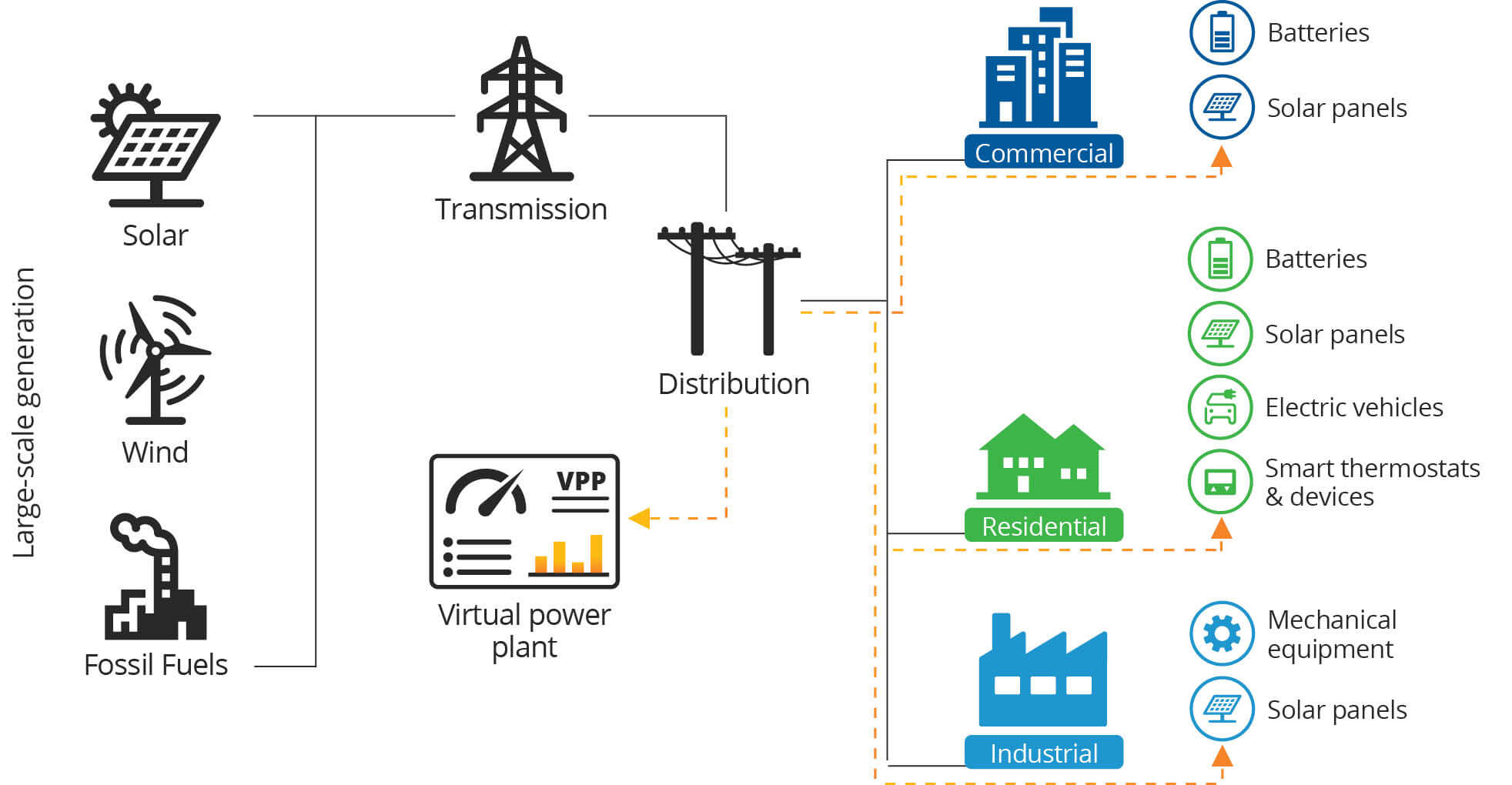Imagine a virtual power plant (VPP) as a high-tech, interconnected system that doesn’t exist in a single physical location but operates as if it were one. It’s like having a bunch of power sources, like solar panels, wind turbines and batteries, spread out in different places but working together seamlessly.
Here is a breakdown of how it works:
Distributed Energy Resources
Instead of having one big power plant, a virtual power plant relies on many smaller, decentralized sources of energy called distributed energy resources (DER). These could include solar panels on rooftops, wind turbines in various locations and even batteries storing excess energy.
Smart Technology
The key is in the smart technology that links all these energy sources. These devices communicate with each other, constantly sharing information about how much energy they’re producing or storing. This communication is what makes the system “virtual.”
Optimization
With all this data, the virtual power plant can optimize how it uses and distributes energy. For example, if one area is experiencing peak energy demand, the virtual power plant can redirect energy from other sources to meet that demand efficiently.
Flexibility
The virtual power plant can adapt to changes in weather conditions or fluctuations in energy demand. If there’s a lot of sunshine and the DERs are producing more energy than needed, the excess can be stored in batteries or sent to areas that need more power.
Grid Support
It can also provide support to the traditional power grid. During times of high demand or when there’s a sudden drop in power from a conventional power plant, the virtual power plant can step in to help stabilize the grid.
In essence, a virtual power plant is a modern approach to energy management that leverages technology to create a more resilient and efficient power system.
VPP and Dakota Electric
The energy industry is buzzing about virtual power plants, with 44% of Dakota Electric members actively participating in a large virtual power plant, contributing up to 150MW for several years. While you might recognize this as load management, a program that saves you money monthly, it’s part of a broader initiative that reduces CO2 emissions and minimizes reliance on electric peaking plants.
Dakota Electric collaborates with Great River Energy to ensure ample generation capacity for members. Both load management and virtual power plants play a crucial, cost-effective role in the energy landscape. We extend our gratitude to members for their commitment to these programs and pledge to keep innovating, introducing new initiatives that help manage costs and carbon emissions.
How Virtual Power Plants Work

During periods of high demand, especially on extremely hot or cold days, the grid relies on short-term energy generation solutions like natural gas, also called “peaker” power plants, to meet additional power needs, which are dependent upon the price of natural gas, which can fluctuate.
Virtual power plant resources have the capability to mitigate reliance on peaker plants through the following key actions:
- Anticipate and activate devices, such as smart thermostats and electric water heaters, ahead of peak grid demand periods.
- Strategically cycle devices like smart thermostats, EV chargers and industrial equipment temporarily in response to peak demand, a practice known as load management.
- Temporarily engage energy storage devices to address surges in power demand.


